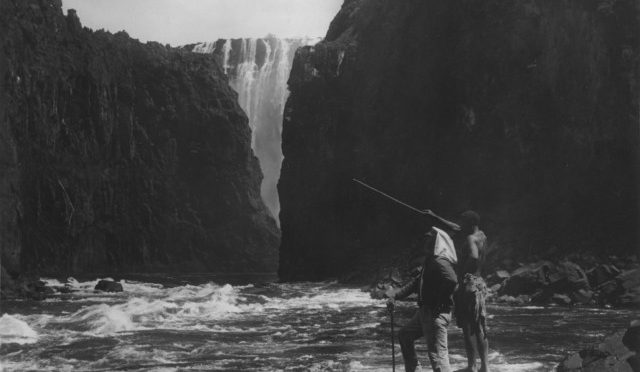LIVINGSTONE was described as ‘a film more romantic in its making than any motion picture yet produced’ at the time of its release in 1926. This is still true compared to perhaps any other film made during the silent era. The extraordinary aspect of the film is its production, which in turn makes for an incredible viewing. Filmed on location throughout central Africa, filmmaker M.A. Wetherell traversed the terrain, including 1,200 miles on foot, to capture the footage that he would turn into the story of the fabled missionary and explorer, David Livingstone.
Playing the man himself, Wetherell details the most famous parts of Livingstone’s journeys and life, including an attack by a lioness, and Stanley’s infamous finding of the sick and weak missionary with the immortal words ‘Dr Livingstone, I presume’.
As much as the story itself, the filming must have been an adventure, which Wetherell became known for – his next film, ROBINSON CRUSOE, would be in the same, self-described ‘on the hoof’ mould, again playing the lead character.
LIVINGSTONE’s portrayal of the landscape and its people is not only beautiful but also an important document, both of the large production scope of some films during the silent era, but also within African cinema. Wetherell lived in Africa for 15 years before making the film, which clearly inspired his perspective and approach. The film therefore stands as an early example of African cinema, certainly that which was exposed to an international audience. An interesting aspect of this is that it shows a great deal of respect for its subjects – the indigenous peoples are portrayed in an equal light to the Europeans, unlike much of the cinema of the time, especially films like D.W. Griffith’s BIRTH OF A NATION. Wetherell clearly was interested in the people, and their relationship with Livingstone. The film is not a patriotic dramatisation of the colonisation of Africa by the British, but rather focuses on the personal quest of our hero to expel slavery from the continent.
Although not received particularly well at the time, the film fortunately survives today and opened the weekend of the 15th British Silent Film Festival, with a magnificent live soundtrack from Gunter Buchwald.


![Livingstone2 [640x480]](http://takeonecinema.net/wp-content/uploads/2012/04/Livingstone2-640x480-300x216.jpg)